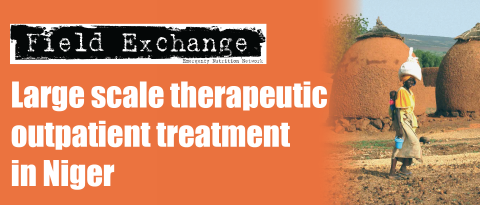Excess dietary iodine in long-term African refugees
Summary of published research1
In Africa, great progress has been made towards the elimination of iodine deficiency, largely due to the increased household availability of iodised salt. However there are risks for populations with high intakes of iodine. In populations that were previously severely deficient, increased dietary iodine is associated with hyperthyroidism. Iodine induced hyperthyroidism is a serious condition that may, in extreme cases, lead to death, usually from heart-associated causes. Optimal iodine intake is therefore important, but due to poor quality control at the production level of iodised salt and the high levels of fortification required by some African governments - legislation that specifies up to 2.5 times the WHO recommendation - there is now a risk that populations which were previously severely deficient in iodine are now consuming an excess.
In light of this risk, a research study has recently been completed to assess the iodine status of long-term refugees dependent on international food aid and humanitarian assistance.
The study involved a series of cross-sectional two stage cluster or systematic random sample surveys on male and female adolescents aged between 10-19 years in six refugee camps in Kenya, Uganda, Ethiopia, Algeria and Zambia. The six surveys were carried out between March 2001 and July 2003 and the majority of survey subjects had spent all or most of their lives within these sites. Urinary iodine excretion and the prevalence of visible goitre were assessed. Salt samples of food rations were also collected and tested for iodine content by titration.
The study found that median urinary iodine concentration (UIC) ranged from 254 to 1200?g/L and in five of the camps exceeded the recommended maximum limit of 300?g/L, indicating excessive iodine intake. Visible goitre was assessed in four surveys where it ranged from 0.0% to 7.1%. The camp with the highest UIC also had the highest prevalence of visible goitre. The iodine concentrations in 11 salt samples from three camps were measured by titration and six of these exceeded the production level concentration of 20-40 ppm (parts per million) recommended by WHO, but were less than 100 ppm.
The authors concluded that excessive consumption of iodine is occurring in most of the surveyed populations and that urgent revision of the level of salt iodisation is required to meet current WHO recommendations. However, the study also concluded that based on an analysis of salt samples and the amount of salt normally distributed in the food ration, it was unlikely that the high levels of iodine found in urine excretion of some individuals were only due to 'over-iodisation' of salt.
There are a number of other possible explanations: salt intakes in these populations are considerably higher than assumed, the presence of salt iodised at a higher level than the sample that were tested, the consumption of significant quantities of iodine in other foodstuffs, or high levels of naturally occurring iodine in drinking water. The last possibility seems a likely candidate in the Tindouf camp, which is located in the Sahara desert.
In the final analysis the full cause of excessive iodine excretion remains unknown and further investigation is required urgently to identify the cause, assess any health impact and identify remedial action.
1Seal. A et al (2006). Excess dietary iodine in long-term African refugees. Public Health Nutrition, 9(1), pp 35-39
Imported from FEX website


